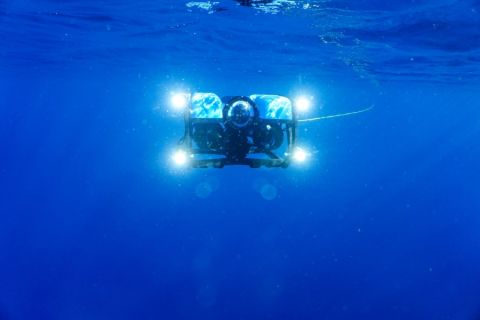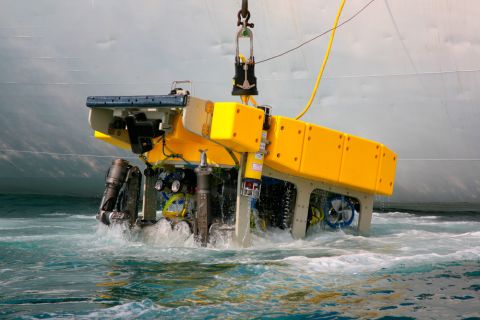The past year saw dramatic changes in the oil and gas market, ranging from the Arab Spring to tragedy in Fukushima, Japan. As the industry heads into a new year, questions have emerged that will likely preoccupy the gas market and affect decision-making through 2012.
Here, PFC Energy has identified 10 factors that are expected to impact industry trends.
What will happen with Japan’s nuclear situation?
There was no shock greater in the gas market in 2011 than the earthquake and tsunami that hit Japan in March 2011. Nuclear output has dropped 72% from reactors that were destroyed and from others that have not come back online following maintenance and repair. LNG demand in the power sector rose 19% in 2011. Other questions to consider include whether this de facto moratorium in Japan will continue, whether – not how – nuclear power plants will rapidly come back online, and how these factors will impact nuclear power elsewhere.
What will happen to the shipping market?
Besides spot prices, the most visible sign of tightness in the LNG market is shipping. From a low of around US $30,000/day in mid-2010, charter rates are now sustainably above $100,000, and there are several short-term charters signed for prices above $150,000. It is no wonder the industry ordered a record 54 newbuilds in 2011. Even though these newbuilds will not hit the market this year, shipping will be a key industry segment to watch in 2012.
What will happen to European demand?
After a 7.5% increase in 2010, gas demand in Europe has fallen approximately 7% (to September), bringing gas consumption back to 2009 levels. This is due in part to a weather correction, with 2010 being exceptionally cold. This demand weakness also reflects idiosyncratic reasons such as a new coal directive in Spain that boosted coal use versus gas. But there are broader dynamics that will weigh on the market: GDP growth is slowing and will be negative in several countries, and high gas prices and low carbon emission prices have made coal a lot more competitive relative to gas. On the other side of the coin, the revocation of subsidies for renewables could help gas demand.
With growing gas demand in Japan and Korea as well as in North America due to low prices, a big uncertainty is what happens to demand in OECD Europe and the implications that will have for gas pricing relative to Asia.
Will the FID wave of 2011 be sustained?
In 2011, a record number of LNG projects took final investment decision (FID): In Australia this included Gladstone LNG, Prelude LNG, Australia Pacific LNG, and Wheatstone LNG, and it also included Donggi-Senoro in Indonesia. Meanwhile, projects such as Sabine Pass (US), Kitimat (Canada), and Ichthys (Australia) have a credible chance of moving forward in early 2012.
How big will North American gas exports be?
The momentum for North American exports is growing as companies with underused regasification terminals convert them into liquefaction plants.
In November 2011, Cheniere selected Bechtel to be its EPC contractor for the first two trains of its Sabine Pass plant, and the company is making progress toward that project’s next phase. Other proposed LNG projects are securing approvals, although the pace of development will slow as the US Department of Energy pauses to study the impact of LNG exports on America’s energy security.
Even before LNG exports materialize, the shale gas revolution in the US is having an impact on Canada and Mexico. In the past few years, the US has managed to reduce its net imports from Canada by 2 Bcf/d, and it has boosted exports to Mexico by 0.5 Bcf/d.
Meanwhile, in Western Canada, Apache-led Kitimat LNG has received export approval from the National Energy Board and seeks to take FID in early 2012, while two other projects led by Shell and Petronas are progressing as well. Between the US and Canada, North America is forecast to be the second largest source of LNG growth between now and 2020 (behind Australia).
What impact will smaller markets have on LNG?
Six countries – Argentina, Brazil, Chile, Kuwait, the United Arab Emirates, and Thailand – have collectively imported more LNG than China in 2011. Malaysia, Indonesia, Israel, and Singapore will start to import LNG in 2012 and 2013, perhaps joined by Pakistan.
Will Azerbaijan make a decision about the Southern Corridor?
A long-awaited decision on Europe’s Southern Corridor may come in 2012 as the SOCAR-led consortium is supposed to announce a decision on gas sales from the second phase of Shah Deniz. But there is still no front runner among the competing commercialization options, and the Total discovery at Absheron could complicate and delay a decision.
What’s next for East Africa?
Within two years, East Africa has emerged as one of the hottest exploration zones for natural gas. Companies such as Anadarko, BG, and Eni have made sizeable discoveries in Mozambique and Tanzania that will eventually be relied on to develop an LNG business. Yet there is still much work needed to delineate the resource base, and there also is little existing infrastructure, meaning new projects will take time to develop.
How quickly will shale gas progress outside North America?
Shale gas outside the US is moving from a land-grab phase to an exploratory drilling phase. So far the results have been mixed depending on the country: Companies have reported disappointing flow rates (Poland); governments have responded with outright bans (South Africa and France); there has been high M&A activity (Australia); and there has been progress toward larger commercial volumes (Argentina and China).
Will GTL and floating LNG open up new commercialization options for gas?
With Pearl GTL online, gas to liquids (GTL) is once again a major focus. In particular, the sustained disparity between oil and gas prices in North America has led Sasol to propose two GTL projects. After years of registering little besides disappointment, GTL may be getting a second lease on life.
Besides GTL, the other technological wildcard is floating liquefaction. By taking FID on Prelude in 2011, Shell paved the way for floating liquefaction, but no other project has reached FID.
The global natural gas market, in other words, is in its usual state of flux. But with the US poised to be an exporter of natural gas and a growing demand for LNG imports around the world, metrics look bullish.

In 2011, a record number of final investment decisions were made for major LNG projects, including the Gladstone, Prelude, Australia Pacific, and Wheat-stone developments in Australia. The chart shows a dramatic spike in sanctioned LNG capacity from the previous year. (Chart courtesy of PFC Energy)
Recommended Reading
US Oil, Gas Rig Count Falls to Lowest Since January 2022
2024-05-03 - The oil and gas rig count, an early indicator of future output, fell by eight to 605 in the week to May 3, in the biggest weekly decline since September 2023.
Pemex Reports Lower 2Q Production and Net Income
2024-05-03 - Mexico’s Pemex reported both lower oil and gas production and a 91% drop in net income in first-quarter 2024, but the company also reduced its total debt to $101.5 billion, executives said during an earnings webcast with analysts.
Chouest Acquires ROV Company ROVOP to Expand Subsea Capabilities
2024-05-02 - With the acquisition of ROVOP, Chouest will have a fleet of more than 100 ROVs.
SLB, OneSubsea, Subsea 7 Sign Collaboration Deal with Equinor
2024-05-02 - Work is expected to begin immediately on Equinor’s Wisting and Bay Du Nord projects.
SilverBow Makes Horseshoe Lateral in Austin Chalk
2024-05-01 - SilverBow Resources’ 8,900-foot lateral was drilled in Live Oak County at the intersection of South Texas’ oil and condensate phases. It's a first in the Chalk.




